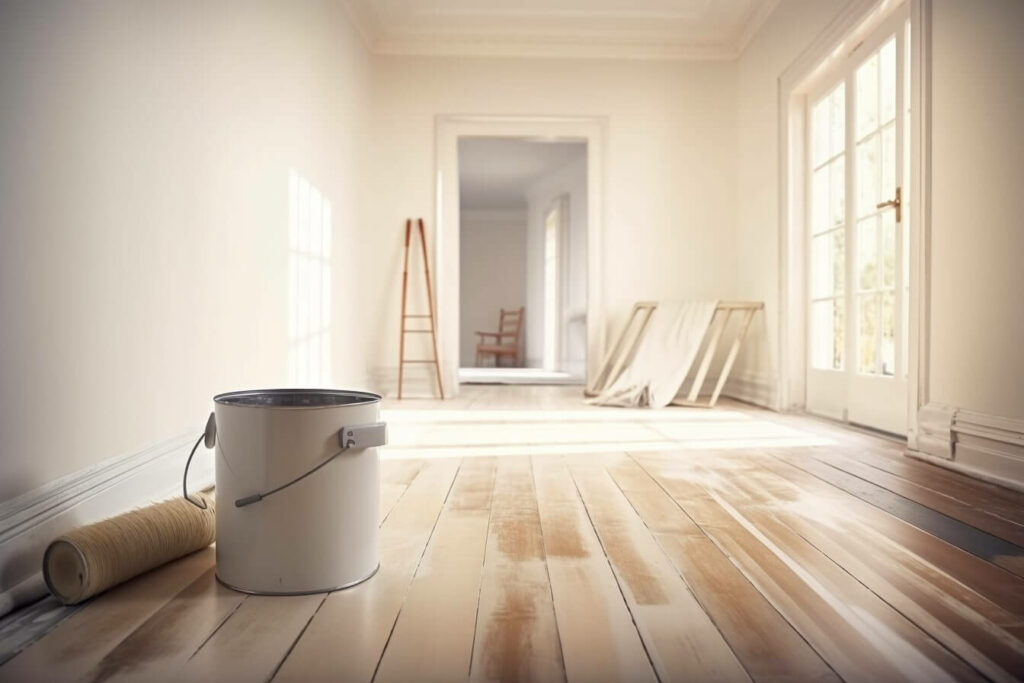Unlock Premium, Members-Only Content
Your source for the most relevant updates in sustainable construction
Introduction: Are you a forward-thinking architect, an innovative interior designer, or a cutting-edge construction company looking to stay ahead of the market and create a lasting impact?
The future of construction lies in sustainable and environmentally responsible practices. This comprehensive guide explores the exciting world of eco-friendly building materials that can revolutionize how you design, build, and create spaces.
Read on to discover materials you never knew existed, from reclaimed wood to hempcrete. Learn how integrating these options can put you at the forefront of the green building movement.
Eco-Friendly Building Materials #1: Reclaimed Wood
Q: Is reclaimed wood a sustainable choice?
Reclaimed wood is a prime example of eco-friendly building material. By repurposing old, salvaged wood from deconstructed buildings, barns, or factories, you are preventing the need for new timber and reducing the demand for deforestation. Reclaimed wood adds character and history to a space and boasts a lower carbon footprint than newly harvested wood.

Eco-Friendly Building Materials #2: Bamboo
Q: How does bamboo compare to traditional wood in terms of sustainability?
Bamboo is an incredibly eco-friendly building material due to its rapid growth and exceptional strength. Unlike traditional wood, which can take decades to mature, bamboo reaches maturity in three to five years. This remarkable growth speed means less land is required to produce the same material, reducing deforestation and habitat loss.
Moreover, bamboo is a versatile material, suitable for flooring, cabinetry, and even structural elements, making it an excellent choice for sustainable construction projects.

Eco-Friendly Building Materials #3: Recycled Steel
Q: Why should I consider using recycled steel in my construction projects?
Recycled steel is a durable and sustainable alternative to traditional steel manufacturing. Using recycled steel reduces energy consumption and the need for raw materials, thereby minimizing the environmental impact of mining and extraction.
Additionally, recycled steel offers the same strength and performance as virgin steel, ensuring that your construction projects are eco-friendly and structurally sound.
Eco-Friendly Building Materials #4: Straw Bales
Q: What are the benefits of using straw bales in construction?
Straw bales offer an innovative, environmentally friendly insulation option for walls, roofs, and floors. Using this abundant agricultural byproduct, you’re diverting waste from landfills while providing excellent thermal insulation and noise reduction.
Straw bales are a low-cost, renewable, and energy-efficient alternative to conventional insulation materials, making them an ideal choice for eco-conscious architects and builders.
Unlock Premium, Members-Only Content
Your source for the most relevant updates in sustainable construction
Eco-Friendly Building Materials #5: Cork
Q: Why is cork considered a sustainable building material?
Cork is harvested from the bark of the cork oak tree, a process that doesn’t harm the tree and allows it to continue growing. This makes cork a renewable resource with a minimal impact on the environment. Cork is an excellent thermally and acoustically insulator that is naturally resistant to mold and mildew.
With its unique aesthetics and versatile applications – including flooring, wall coverings, and insulation – cork is an attractive and sustainable choice for eco-friendly construction projects.
Eco-Friendly Building Materials #6: Rammed Earth
Q: What makes rammed earth a sustainable building material?
Rammed earth construction has been used for thousands of years, and its resurgence in sustainable building practices is well-deserved. This technique involves compacting a mixture of natural, raw materials such as clay, sand, and gravel to create sturdy, energy-efficient walls.
The thermal mass of rammed earth walls helps regulate indoor temperatures, reducing the need for artificial heating and cooling. This low-impact, locally sourced material creates beautiful, durable structures while minimizing the environmental footprint.
Eco-Friendly Building Materials #7: Hempcrete
Q: How does hempcrete contribute to sustainable construction?
Hempcrete is a bio-composite material made from the woody core of the hemp plant, mixed with lime and water. This innovative eco-friendly building material is breathable, insulating, and lightweight, making it ideal for constructing walls and providing insulation.
Hemp is a fast-growing, low-impact crop that absorbs carbon dioxide during its growth, sequestered within the hempcrete, effectively reducing the building’s overall carbon footprint.
Eco-Friendly Building Materials #8: Solar Tiles
Q: Why are solar tiles an essential component of sustainable construction?
Solar or photovoltaic (PV) tiles are a groundbreaking solution for generating clean, renewable energy. By integrating solar cells into roofing tiles, you can harness the power of the sun to produce electricity for a building without compromising aesthetics.
Solar tiles offer a discreet, visually appealing alternative to traditional solar panels, making them ideal for architects and designers who want to incorporate sustainable energy solutions in their projects.

Eco-Friendly Building Materials #9: Low VOC Paints
Q: Why should I use low-VOC paints in eco-friendly construction projects?
Volatile Organic Compounds (VOCs) are harmful chemicals in many traditional paints that can contribute to air pollution, smog, and health issues. Low VOC paints are formulated with fewer toxic chemicals, improving indoor air quality and reducing environmental impact.
By choosing low-VOC paints for your construction projects, you prioritize the well-being of the planet and the people who will inhabit the space.
Eco-Friendly Building Materials #10: Green Roofs
Q: What are the benefits of green roofs in sustainable construction?
Green roofs, also known as living roofs, are covered with vegetation, promoting biodiversity and providing various environmental benefits. They help reduce stormwater runoff, mitigate the urban heat island effect, and improve air quality by absorbing carbon dioxide and other pollutants.
Additionally, green roofs offer natural insulation, reducing energy consumption for heating and cooling. You’ll contribute to a healthier, more sustainable urban environment by incorporating green roofs in your designs.
Eco-Friendly Building Materials: A Conclusion
Embracing eco-friendly building materials and sustainable construction practices can put architects, interior designers, and construction companies ahead of the market and make a lasting, positive impact on the environment.
By incorporating reclaimed wood, bamboo, recycled steel, straw bales, cork, rammed earth, hempcrete, solar tiles, low VOC paints, and green roofs into your projects, you’ll create innovative, energy-efficient, and environmentally responsible spaces that set you apart from the competition.
To further enhance your sustainability expertise, we invite you to discover UGREEN Sustainability Consultancy Services or UGREEN Skills, our sustainability educational platform for professionals and companies.
By engaging with these resources, you’ll be better equipped to create a greener future for the built environment and establish yourself as a sustainable design and construction leader.
The future of architecture and construction is undeniably green. Don’t miss your chance to be part of this exciting movement. Embrace eco-friendly building materials, and transform how you design, build, and create spaces for a better world.
Unlock Premium, Members-Only Content
Your source for the most relevant updates in sustainable construction
If you need our services in the Portuguese language, click here.